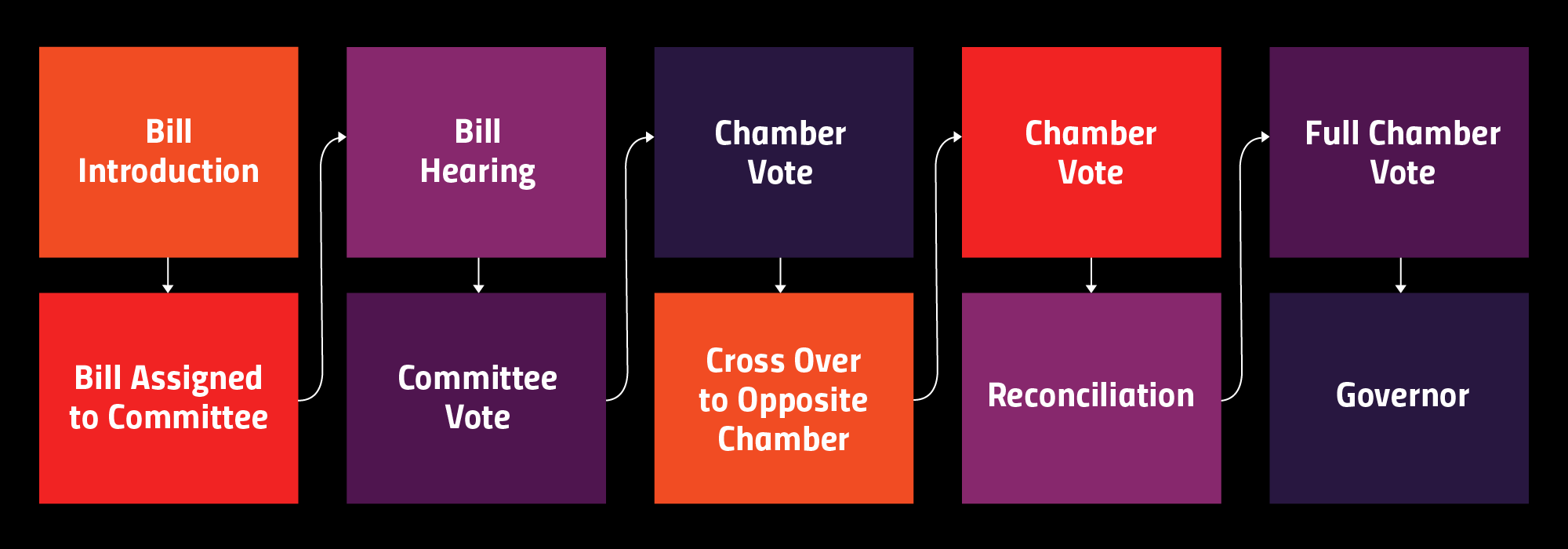HOW TO BUILD LEGISLATIVE CAMPAIGNS
Understanding How the State Legislative Process Works
At the very beginning of any legislative campaign, it is important to know how your state’s legislative process works, including the usual order of events or steps in the process. These are the key moments that campaigns should focus on when creating their roadmap to victory.
The general flow of a state’s legislature can look like this:

The step-by-step process
- Bill Introduction: A Bill can be introduced in either the House or the Senate (or it can be introduced in both Chambers simultaneously)
- Committee Assignment: The Bill is assigned a number and a committee based on the topic of the bill
- Bill Hearing and Committee Vote:
- A hearing is held to hear from proponents and opponents of the bill
- After the hearing, the Committee Chair decides whether or not to bring the bill to a vote before the committee, if a majority of the members of the committee vote in favor it passes out of committee.
- Chamber Vote: Full legislature gives consideration and votes on the bill
- If passed, the bill is transmitted along with a formal message to the other legislative chamber (unless there is an identical companion bill in the other chamber)
- Reconciliation: If the bill is sent back to the first chamber, the first chamber could:
- Pass the amended bill
- Refuse to accept the amended bill and request a conference committee to resolve differences
- Full Chamber Vote: If both chambers adopt the agreement, the bill passes the legislature
- The Governor can:
- Sign the bill into law
- Ignore the bill, which allows it to become law without their signature
- Veto the bill and return it to the chamber where the bill originated with a message of objections and suggestions for amendments
- The bill could be reconsidered with those amendments, pass in both chambers, and go back to the Governor to sign the updated bill into law
- The legislature could decide not to address the governor’s objections and could push for the veto to be overridden by getting 2/3 of each chamber to vote for the override
- If successfully overridden, the bill becomes law
- The legislature could let the bill die
While there is a general pattern for legislation with any state legislature, there are important differences among individual state legislatures. Therefore, it is also important for you to research and understand how your specific state’s legislature works.
More Resources
- Book: Mason’s Manual of Legislative Procedure (official parliamentary authority of most state legislatures)

